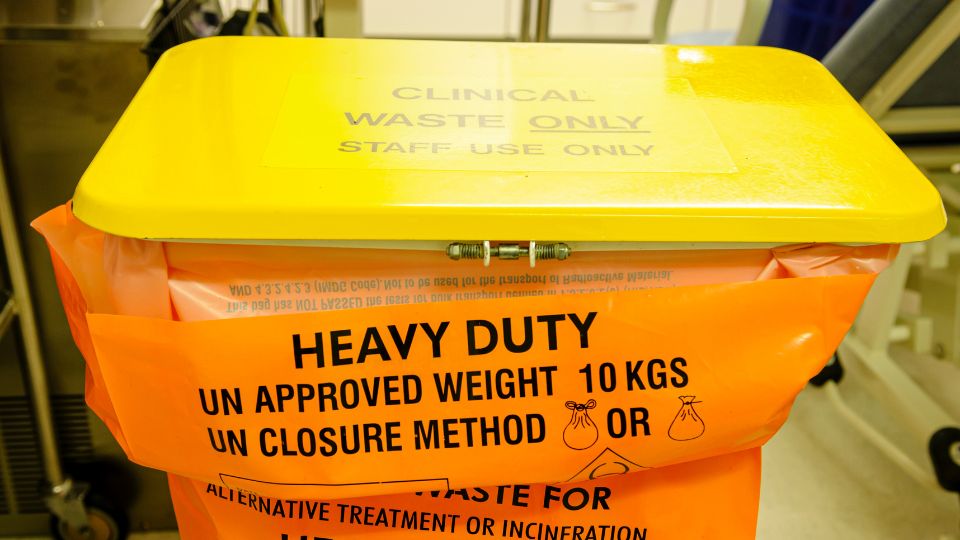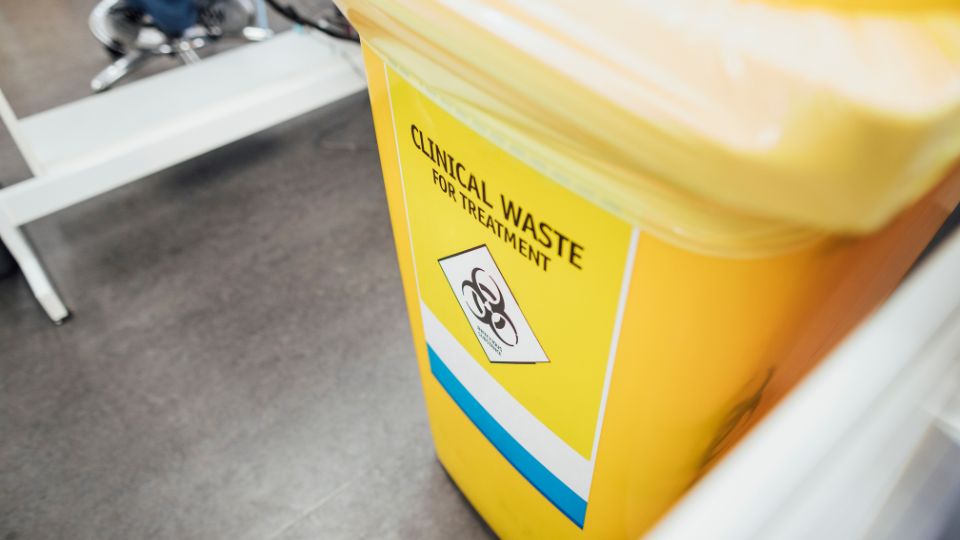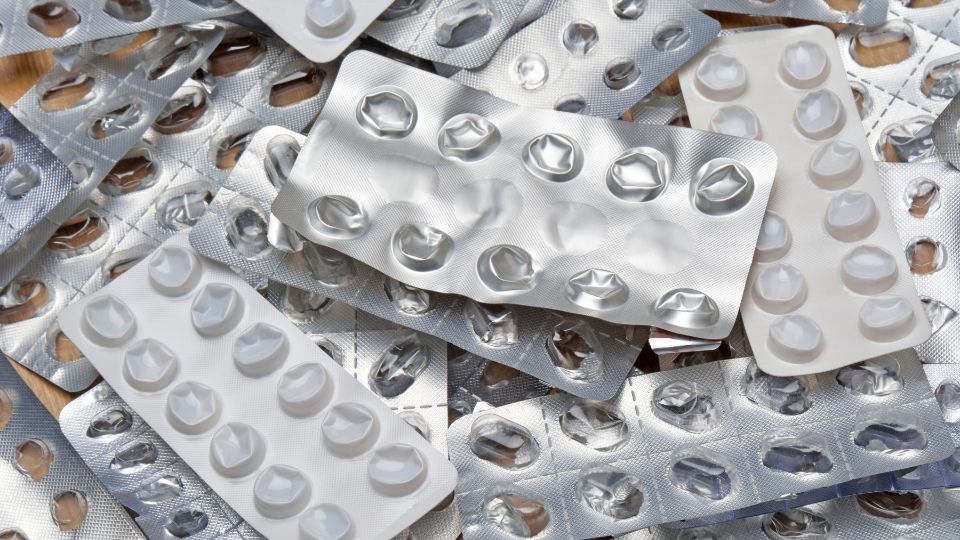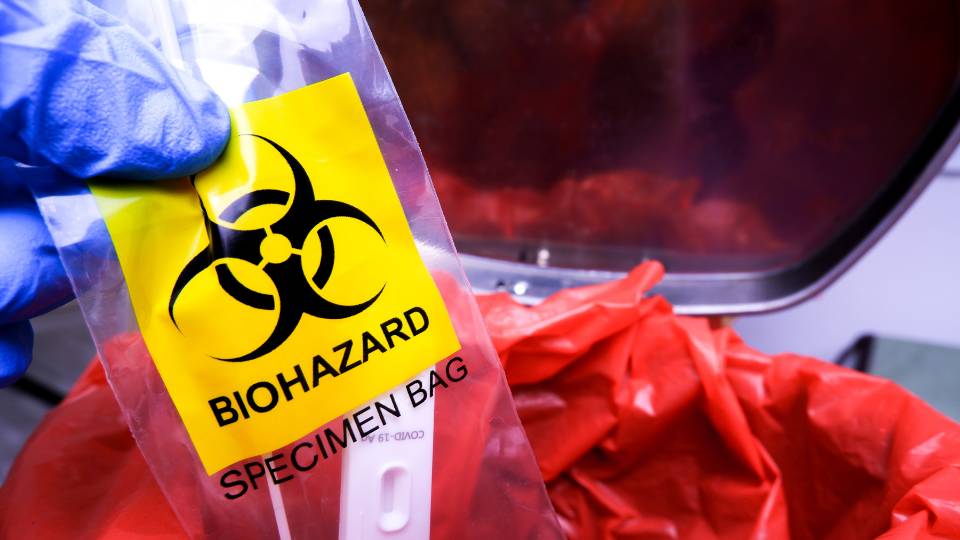
What are the unseen impacts of hospital waste in the UK?
From the NHS’s ambitious clinical waste strategy to the nuances of segregation, reuse, and the pivotal role of professionals, this article navigates the path towards a greener, more efficient healthcare landscape.
Read on to learn how hospitals can take steps to improve their current waste disposal & recycling practices while following DEFRA regulations.
Table of Contents:
- Hospital waste
- How do I conduct a hospital waste audit?
- What type of training and education should I provide staff?
- Should I invest in reusable medical products?
- Should I also reduce my usage of hazardous materials?
- How can I manage sharps waste?
- Should I segregate and label my hospital waste containers?
- What kind of waste policy should I have in place?
- How to segregate hospital waste types
- How to avoid cross-contamination of hospital waste
- Hospital waste facts & statistics
- Conclusion
Hospital waste
At any given time, a medical facility is likely to be dealing with a multitude of varying hospital waste types.
Whether it’s general waiting room waste, hazardous materials, or something else entirely, the sheer volume can be overwhelming.
Fortunately, there are several steps you can take to improve your hospital’s waste management practices.
Here are some considerations to keep in mind:
Creating a comprehensive hospital waste management plan involves careful consideration of various factors to ensure efficiency, compliance, and environmental responsibility.
Here’s a list of key considerations:
- Regulatory Compliance
- Understand and adhere to local, regional, and national regulations governing hospital waste management.
- Waste Segregation
- Implement a robust waste segregation system to separate different types of waste, such as infectious, pharmaceutical, and general waste.
- Staff Training
- Ensure all healthcare staff receive proper training on waste segregation, disposal protocols, and the importance of compliance.
- Waste Minimisation
- Explore strategies to minimise waste generation, including reusing medical equipment and adopting sustainable practices.
- Professional Qualifications
- Ensure that waste management personnel have the necessary professional qualifications and training for effective waste handling.
- Technology and Innovation
- Explore innovative technologies for on-site waste treatment and invest in modern solutions for more sustainable waste management.
How do I conduct a hospital waste audit?
To enhance your hospital’s waste management, the initial step involves gaining a comprehensive understanding of the types and quantities of materials involved, adhering to the regulations surrounding medical waste in the UK, and conducting a thorough assessment of your current practices.
This entails an honest evaluation of on-site activities to pinpoint areas for improvement.
Following this, a comprehensive audit of all aspects and processes related to your hospital’s waste management system is essential.
This encompasses identifying personnel responsible for handling specific materials, assessing their training adequacy, and examining storage practices during non-use periods.
Conducting such an audit provides a clear assessment of the effectiveness or deficiencies in your existing system and aids in pinpointing areas requiring adjustments.
What type of training and education should I provide staff?
Training plays a pivotal role in any effective waste management program, ensuring that medical staff adhere to proper procedures.
It is crucial that all staff comprehends the significance of maintaining healthcare facilities in a clean, safe, and contamination-free state.
While specific facility requirements may vary, even the simplest processes should undergo regular reviews.
Reinforce to the staff the potential consequences of non-compliance, such as facing fines imposed by local authorities or even criminal charges in the event of serious health violations resulting from improper disposal methods, such as an outbreak.
Make sure to avoid these improper disposal methods:
- Dumping medical waste in regular trash bins.
- Failure to segregate different types of medical waste appropriately.
- Disposing of sharps in non-approved containers.
- Pouring liquid medical waste down drains.
- Neglecting to secure and label medical waste containers.
- Ignoring guidelines for pharmaceutical waste disposal.
Should I invest in reusable medical products?
Reducing overall hospital waste
By using reusable medical supplies, you’re able to cut down on the amount of trash your facility produces and reduce the amount of money spent on disposal services.
Protecting the environment
With reusable items, you’re reducing your carbon footprint.
This is particularly helpful in a medical setting, especially when you’re dealing with potentially dangerous chemicals.
Saving money
Reusable medical equipment is less expensive than disposable alternatives in the long run.
This can be especially beneficial for facilities where budgets are tight, and resources are limited.
Improving care quality
Finally, opting for reusable medical products increases the amount of time you can spend on each patient, as you’ll be focusing less on throwing away and refilling supplies.
Should I also reduce my usage of hazardous materials?
As a hospital, you are likely to have a lot of hazardous materials on hand.
Unfortunately, there may not be an alternative for some products that require toxic chemicals for their production or use.
However, there are plenty of other ways to reduce hazardous hospital waste by simply using less harmful options instead.
For instance, rather than use tools or equipment containing mercury (which are commonly used for diagnostic purposes), you can switch to digital and electronic alternatives – preventing numerous health hazards in the process.
How can I manage sharps waste?
Sharps are defined as any object that has a sharp edge or point, such as needles and scalpels.
They’re also some of the most commonly used items in hospitals worldwide:
The World Health Organisation estimates that 16 billion injections are administered yearly, worldwide. So, it’s no surprise that the sheer amount of waste they cause can become a problem!
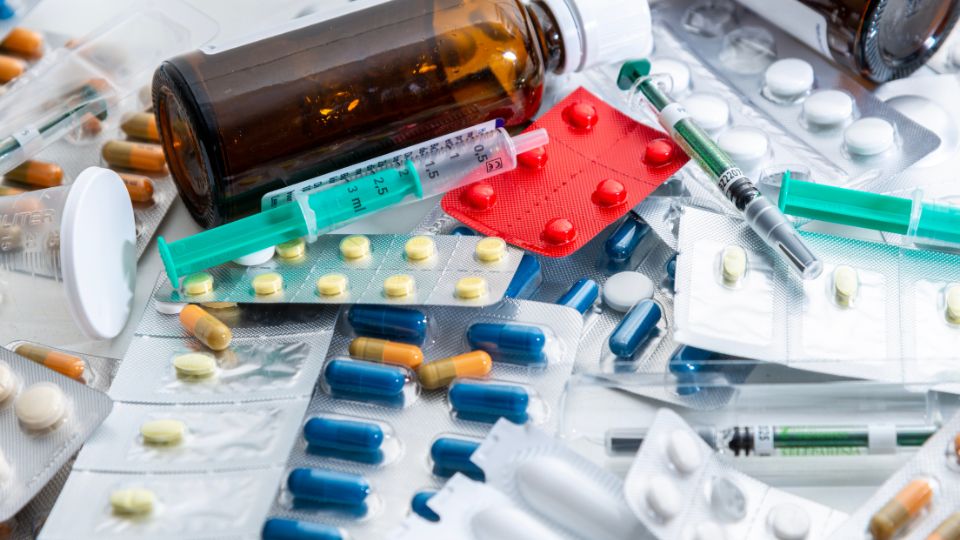
Due to their dangerous nature, your staff needs to be very careful about how it manages this type of hospital trash.
Be sure everyone is well-trained in how to handle sharps, as well as where to dispose of them after use (install containers specifically made for sharps, if you haven’t already).
Finally, make sure your patients are as far removed from accessing them as possible.
Should I segregate and label my hospital waste containers?
The next thing you can do to improve your waste management is to make sure that your staff segregate their waste properly.
This will help ensure that hazardous and non-hazardous waste are stored separately, and that any cross-contamination doesn’t occur.
You could use different colours for different types of waste (e.g., red for clinical and blue for non-clinical), or simply label the containers clearly with stickers: “Hazardous Waste”; “Non-Hazardous Waste”; “General Waste” etc.
Some of your clinical waste bins may already be labelled for you.
Whatever method you choose, make sure it’s consistent across all departments within the hospital. You don’t want staff to get confused about where their garbage should go!
What kind of waste policy should I have in place?
Finally, it’s most important to have a policy in place that explains your hospital’s waste management.
Here are some common concerns you might want to address with yours:
- How to dispose of sharps?
- What do you do with used bandages, dressings, or other materials?
- What do you do with expired medications and other controlled substances that need to be disposed of?
- What do you do with medical waste that’s contaminated but not hazardous?
- What happens when there is blood or bodily fluids on medical equipment, such as needles or swabs?
- How will waste containers be segregated?
- Who is the primary contact if something goes wrong?
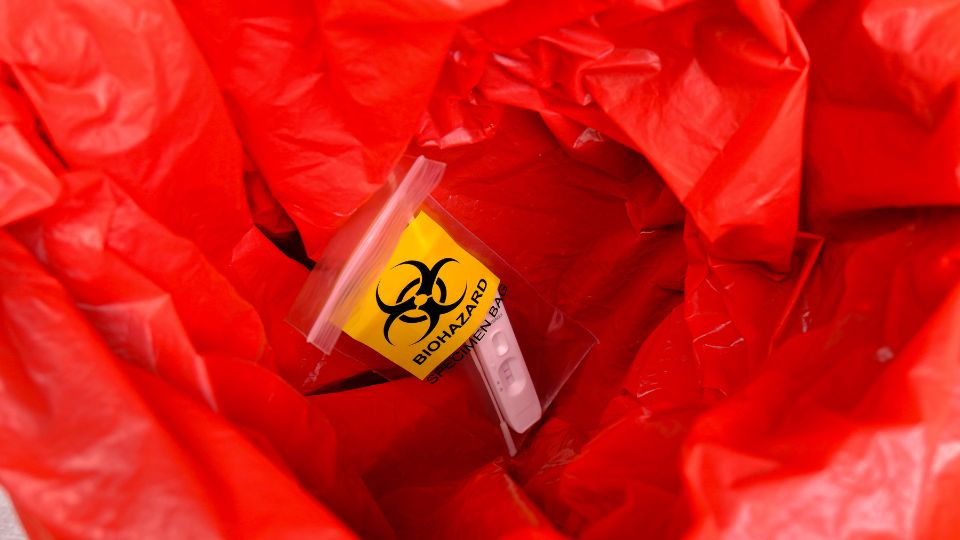
How to segregate hospital waste types
Hospital waste segregation involves categorising different types of waste to ensure safe disposal and environmental protection.
The simplest way to accomplish safe disposal & storage is to place clearly colour-coded & labelled bin types around your site at strategic points to avoid unintentional cross-contamination.
- Infectious Waste
- Materials contaminated with blood, body fluids, or infectious substances, like used bandages, are placed in specially marked containers.
- Sharps Waste
- Needles, syringes, and scalpel blades, posing a puncture hazard, are collected in puncture-resistant containers labelled for sharps disposal.
- Pharmaceutical Waste
- Expired or unused medications require specific segregation and disposal to prevent environmental contamination.
- Cytotoxic Waste
- Materials contaminated with cytotoxic drugs used in cancer treatment, such as gloves and gowns, are segregated to prevent exposure.
- Radioactive Waste
- Waste from procedures involving radioactive materials is segregated and disposed of following radiation safety guidelines.
- General Waste
- Non-hazardous waste, including food waste and packaging, is categorised as general waste.
- Anatomical Waste
- Human or animal body parts, tissues, and organs are segregated for respectful and infection-free disposal.
- Chemical Waste
- Laboratory chemicals, disinfectants, and solvents require careful segregation and disposal.
- Electronic Waste (E-waste)
- Medical equipment with electronic components is segregated for proper disposal or recycling to comply with e-waste regulations.
- Pathological Waste
- Tissues, organs, or body fluids from surgery or autopsy undergo specialised handling and disposal.
How to avoid cross-contamination of hospital waste
To prevent accidental cross-contamination in healthcare settings, it is vital to implement a systematic approach.
Utilising a colour-coded system for waste bins and ensuring clear labelling on containers can enhance the visual identification of different types of medical waste, reducing the risk of mix-ups.
Regular staff training sessions on proper waste segregation procedures, emphasising the importance of preventing cross-contamination, are essential.
Encouraging the use of personal protective equipment (PPE) during waste handling further minimises the risk of direct contact with contaminants.
Designating separate workstations for various types of waste handling, providing puncture-resistant containers, and avoiding overfilling bins are practical measures to prevent accidental spills and contamination.
Strict adherence to established waste disposal procedures, segregation at the source of waste generation, routine audits, and continuous monitoring contribute to maintaining a consistent and reliable waste management system.
Immediate cleanup of spills, regular review and updates of procedures, clear communication among staff, and meticulous documentation of waste disposal activities also play key roles in mitigating the risk of accidental cross-contamination, ultimately fostering a safer healthcare environment.
Hospital waste facts & statistics
With NHS providers in England producing around 156,000 tonnes of clinical waste annually, equivalent to over 400 fully loaded jumbo jets, the environmental impact is substantial, accompanied by high running costs and carbon emissions.
Upon implementation, the strategy targets reducing future waste volumes, yielding approximately £11 million in annual revenue savings for the next decade.
It also aims for a 30% reduction in carbon emissions, aligning with the NHS’s net-zero ambition for its estate by 2040, prioritising environmental responsibility for patients, staff, and the wider community.
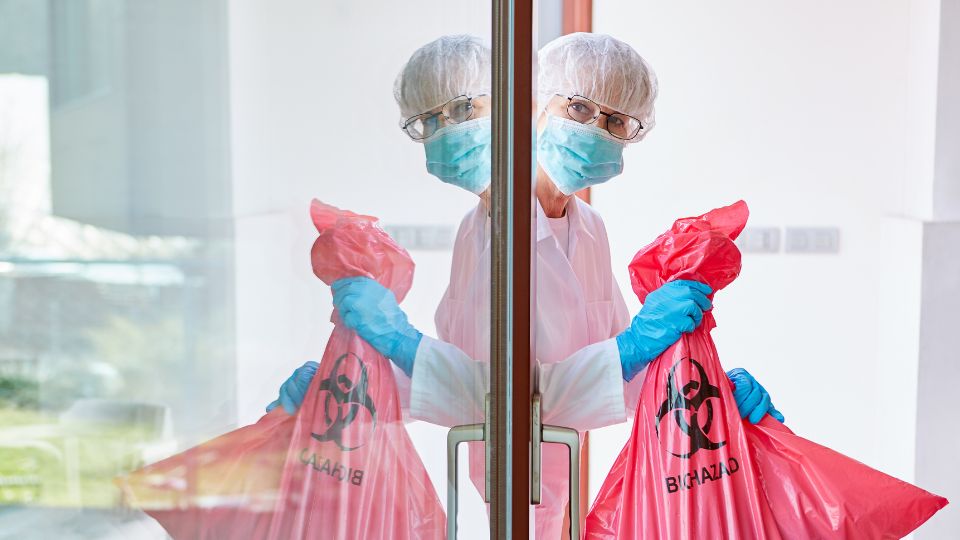
The Clinical Waste Strategy presents a bold reform direction, including specific actions:
- Ensuring 100% of healthcare sites, including the primary care managing agents, have fully trained waste managers.
- Improving waste segregation and compliance, targeting a 20-20-60 waste split – 20% incineration (yellow bag) waste, 20% infectious (orange bag), and 60% offensive waste.
- Prioritising the management of waste contracts for hospitals.
- Facilitating ownership and control of own processing assets, using innovative technologies for on-site infectious waste treatment.
Complementing a Clinical Waste Strategy, you can publish a hospital waste management plan to be accessible to relevant staff.
Conclusion
Highlighting the consequences of non-compliance, including fines and potential criminal charges, is crucial to reinforce waste management importance.
Improper disposal methods, such as dumping medical waste in regular bins or neglecting pharmaceutical waste guidelines, must be avoided.
Opting for reusable medical products reduces costs, environmental impact, and improves care quality.
While some hazardous materials are unavoidable, reducing harmful options minimises hazardous waste. Proper sharps waste management involves staff training, designated containers, and ensuring patient safety.
Segregation and labelling of hospital waste containers, using colour-coded bins or clear labels, prevent cross-contamination.
Establishing a comprehensive waste policy is vital for addressing concerns like sharps disposal, handling used materials, and establishing primary contacts for emergencies.
Hospital waste segregation involves categorising waste types, from infectious to general waste, using strategically placed, colour-coded bins for safe and efficient disposal.
Implementing a systematic approach with staff training and routine audits ensures a consistent and reliable waste management system, contributing to a safer healthcare environment.

